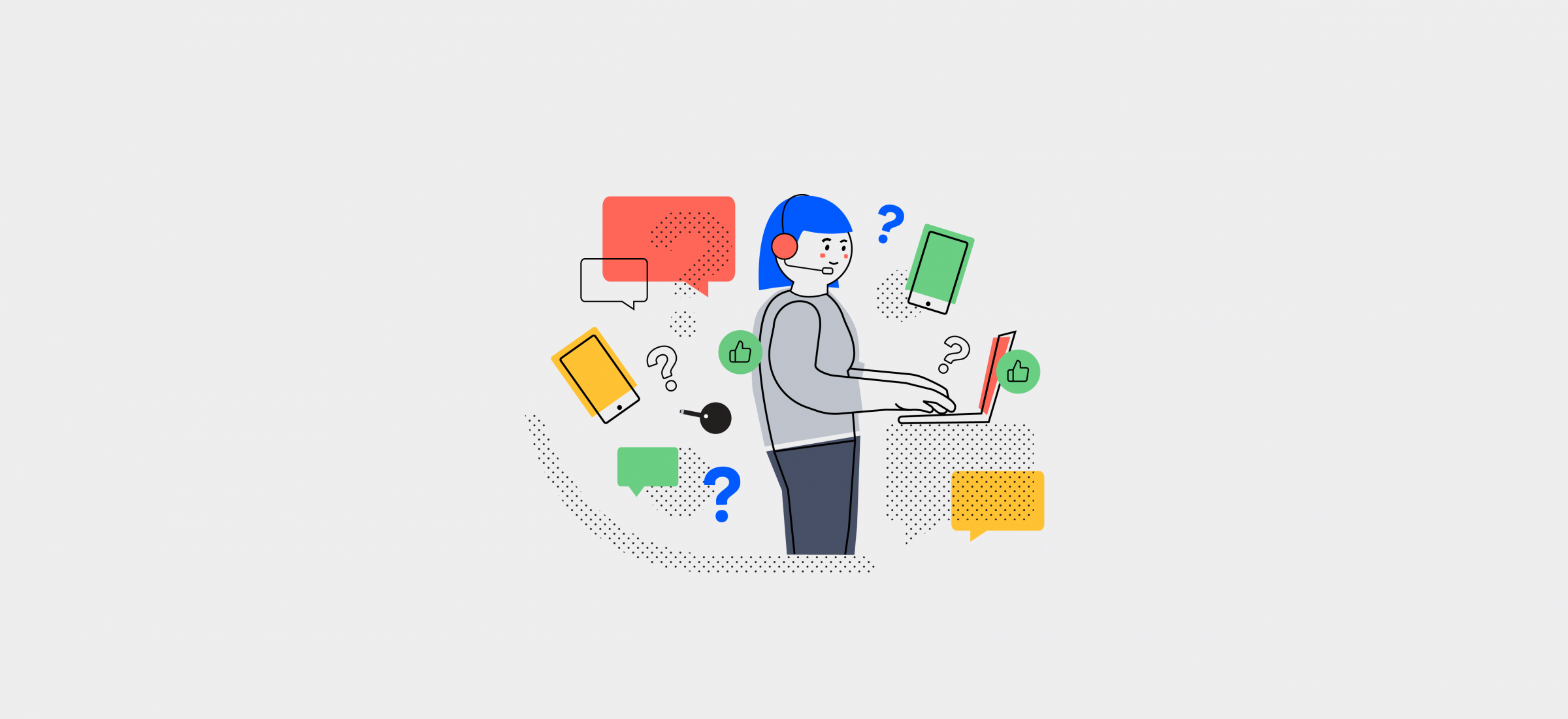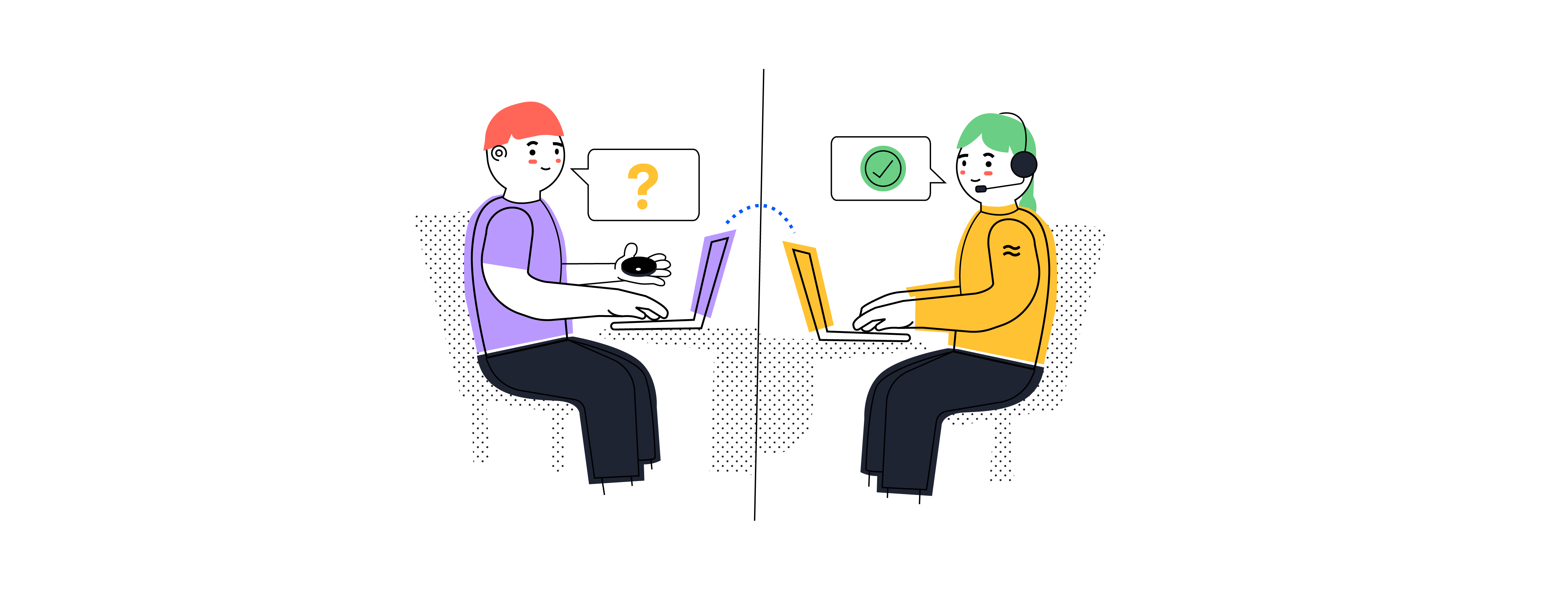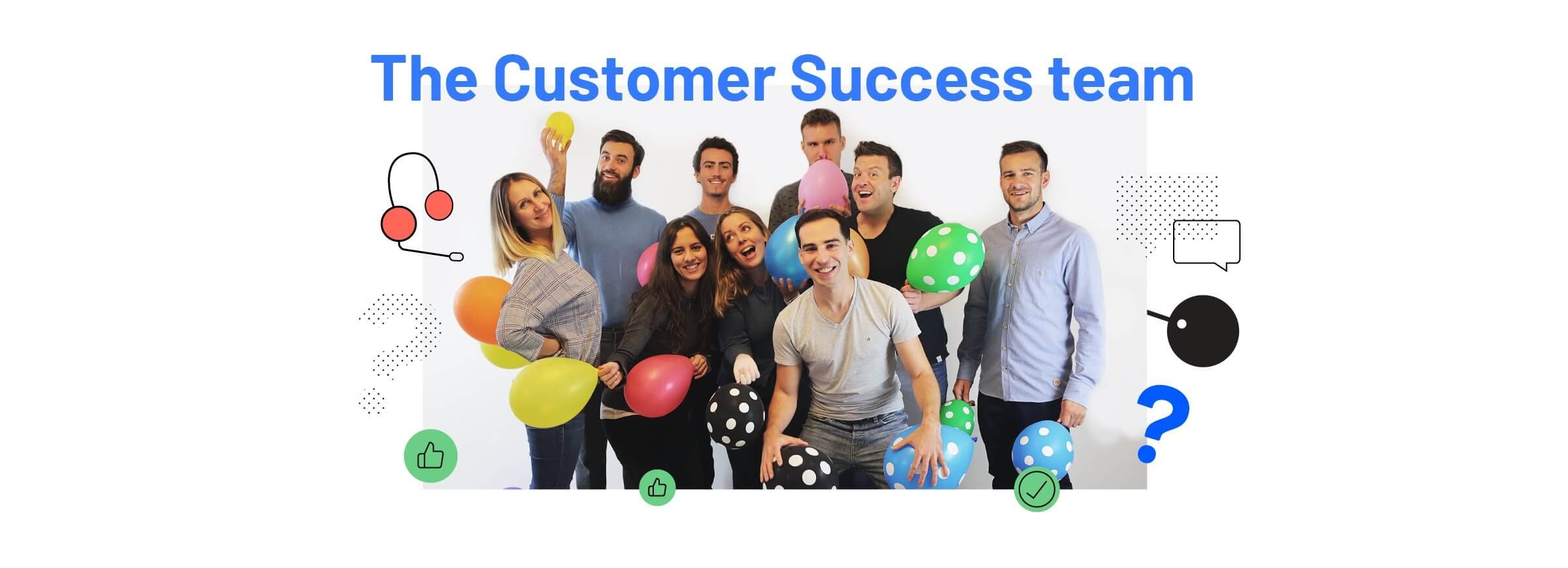All employees across a company can benefit from joining their customer success team. That’s why we offer an all-hands support program for all employees to help solve users’ problems
All-hands support: The benefits of joining your customer success team

I’m a copywriter. I put together words in a meaningful way but that doesn’t mean every type of communication is right up my alley. For example, direct and real-time customer contact scares the living daylight out of me.
That’s why I have an immense amount of respect for the Customer Success team at Airtame.
Our Customer Success team (learn more about the team here) is always on support for those of our users out there in need of assistance. Sometimes, they get help from their co-workers, like me. We call this “all-hands support”. I want to give you a run-through of what that process looks like and how it makes up the foundation of the Airtame employee experience.
Want to know the difference between customer support and customer success? Don’t fret, we’ve got you covered.
What is all-hands support?
All-hands support at Airtame is established as a 10-step program, with all of us getting the offer to join the customer support chat for 10 individual hours during which we get paired with a buddy from the support team to guide us through the problems we are likely to run into.

After finishing the program, the employee is awarded with a gift card or voucher plus public appreciation across Slack channel. Being celebrated and praised for helping out is a great incentive and also serves the purpose of sparking the interest of other employees.
Helping out on chat (we use Intercom as our customer support tool) is voluntary, but strongly encouraged from the Customer Success team, and upper management as well.
The Social Media management tool Buffer (which we use and love, by the way) actually recommends implementing a rule where everyone in the company spends around 5% of their total work time on customer support. That’s no more than a day a month or two hours a week. The reason why is super simple; to keep in touch with both the product and the customers.
The big guys like Zapier and Basecamp are fired up over the same idea as well, so don’t just take it from us. Even McDonald’s sets a requirement for every new hire to join the front of the line (I know, burger flippin’ isn’t the same as customer support, but there is a connection), no matter if it’s the CEO, accountant or an actual salesperson.
Joining all-hands support every once in a while is not just beneficial for company culture purposes but product-related issues as well.

Way back when…
Let’s go back in time for a moment so you can get the full scope of why we decided to invite all employees to join the support team from time to time. We start with the beginning; the founders.
After our initial crowdfunding success and the troublesome birth of our first product, the founding team took it upon themselves to reply to every person out there with a comment or problem.
Since then, we’ve done a lot of scaling (something I’ll get back to), and we actually hired 35+ people in 2018. That made it the perfect time for our Customer Success team to re-establish the “all-hands support” methodology.
The benefits of all-hands support for employees
All-hands support isn’t just about making the lives of your customers easier. It’s about changing how you work as a team and grow as a company.
Learn directly from your customers
Who will give you the unfiltered truth about your product? Your customers. Who can tell you about the challenges they run into on a daily basis? Your customers. You get the gist.
I know for a fact that everyone at Airtame who regularly joins all-hands support gets something different out of it. Luke, our Director of Communications, writes down the most common worries so he can create a content plan that addresses those problems and opportunities with the product. Andrew, our UX Designer, learns exactly what parts of his design are confusing and which are spot on.
And me? By joining all-hands support, I learn a lot about how to communicate with the customer when they’re frustrated.

Learn to work in a stressful environment
Our average response time is a little less than 3 seconds, and we work hard on maintaining such a low response rate during standard working hours in Europe and on the Pacific time zone.
With the buddy system of all-hands chat, I can learn how to work steadfastly, aiming to get the best possible answer and advice to any customer on the other side of the chat window.
Learn what your product is all about
Sounds stupid? It’s not, I promise. Employees usually only know what the product is all about from the inside or, even more limitedly, from their own department focus. They don’t immediately consider the overall user experience of the product they help deliver to market.
Helping out on all-hands support forces everyone to learn about the product in general, as a user sees it, instead of just their focus area.

Learn to help
Not to be overlooked, learning how to help both your colleagues and your customers will make you stronger as a team as well as a company.
Sometimes a user might ask such a specific technical question that our customer support team need to lean on the expertise of others’ in the office, such as engineers.
By bringing the product team onboard in all-hands support sessions, an engineer is able to develop a more direct understanding of how their hard work lands in the hands of a user, and what blind spots they may have overlooked. We call that customer empathy.
That means more motivation to quickly solve issues and fewer support tickets in the future. All in all a happier team and better business!
The benefits of all-hands support for the customer
But what’s in it for you, the customer? Let’s break it down.
Better support
Our Customer Success team is incredibly good at taking care of our customer needs, there’s no doubt about it. But customer support can always be improved.
Our 10-step program improves our ability to provide technical, diverse feedback because more team members bring valuable knowledge to the table.
Better product development
Input a customer or lead presents to us is more likely to have a genuine impact on the product roadmap. If, say, one of our engineers encounter a problem first-hand in a chat session, they are motivated to fix the issue faster than if they hear it from someone else.
A better understanding of the product
I’m not talking about the benefits we, the employees, gain from knowing the product better, but rather the insights a customer gets from talking to someone in our team.
With more hands joining customer support, they get the chance to hear a specific solution to a problem, straight from the specialist’s mouth – and hopefully more quickly.

Why all-hands support should be mandatory for everyone
We have started thinking about making all-hands chat sessions part of the job description at Airtame.
When people start a job here, we expect them to set up an Airtame all by themselves and to learn more about the product by talking to other department leads – even join a demo call. Next step is making sure everyone understands our customers and how we deal with them daily.
We’d like to think our team is approachable and friendly, and we can see that in the feedback we receive from our support sessions.

We’re doing an awesome job when our all-hands support initiative is not only proving beneficial for our team, but when customers don’t even know they could be talking to a total customer success rookie like me, and still receive 5-star service.